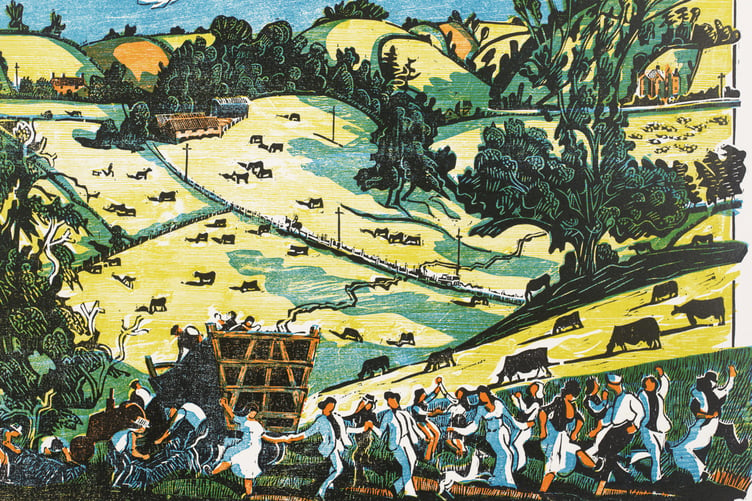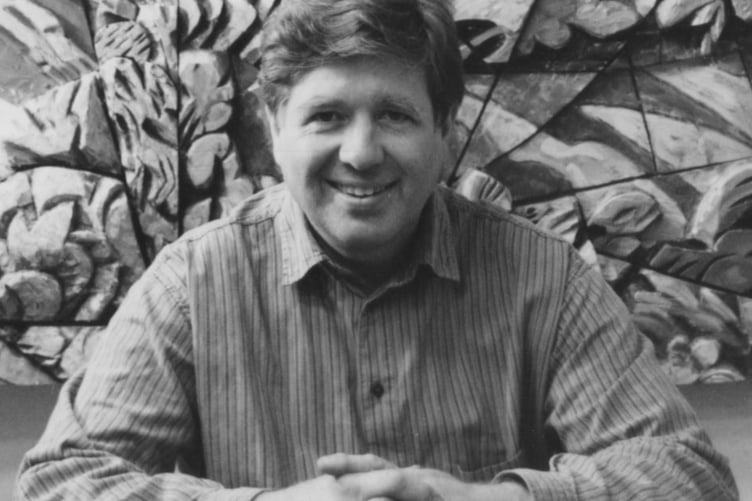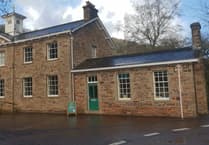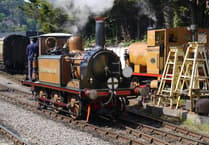A RETROSPECTIVE exhibition about the art and life of the late West Somerset artist Alexander Hollweg (1936-2020) is to be held later this year.
The event, which opens in the Museum of Somerset, Taunton, in November, will be the largest ever show of Hollweg’s art and will feature paintings and sculpture from across the five decades of his career.
The museum has been working with the Hollweg family and The Court Gallery for more than two years to uncover artworks and stories about the artist.
It is also asking people who knew Hollweg to come forward with their memories of him.
The museum also wants to create a database of artworks in private collections and is inviting anybody with an artwork by Hollweg to get in touch.
Hollweg worked for many years from a studio in Nettlecombe, creating art which translated the ordinary and everyday into surprising, often humorous, reflections on modern life.
Space and people were enduring themes.
“Landscape was my subject,” he once wrote. “Not the wilderness, but the landscape made by man. Farm, factory, city, housing estate. The places where people live and work and play.”
Exhibitions and programme manager Sarah Cox said: “It was Nettlecombe that inspired Hollweg’s best-known work, his woodcut ‘Country Dance’.

“It was commissioned to celebrate the bi-centenary of the birth of John Constable in 1976 and is now part of the Tate Collection.
“In the following decades he worked on many major commissions, including the impressive ‘London Life’ mural for the Charlotte Street Hotel in Soho.
“He never lost his sense of fun, curiosity, and positivity, all of which visitors will discover in the exhibition.”
Hollweg exhibited internationally during his career, including through long relationships with galleries in New York and Italy, and achieved both commercial and critical success.
The New York Times described his works as ‘secreting a poetic charge, like a three-dimensional haiku’, and as ‘witty, intelligent, and serious investigations of a middle ground that lies somewhere between painting and sculpture’.
Hollweg was also a gifted teacher of art.
Stewart Geddes, a former president of the Royal West of England Academy, who was a student of Hollweg in the 1980s, reflected on his experiences learning from him and said of his unique artistic output: “Often working between painting and relief forms, his work was mindful of modernism, while coming to terms with the pastoral landscape tradition, particularly in British painting.”

The museum will be publishing an accompanying exhibition catalogue.
In addition to a catalogue essay, it will include previously-unpublished writings by Hollweg and reflections from those who knew him.
The event is the latest in a programme of successful exhibitions at the museum which have focused on 20th-century artists with Somerset connections.
They have included Doris Hatt, Tristram Hlllier, Brian Rice, and Hans Schwarz.
Anybody who wants to share memories of Alexander Hollweg, or provide information about artworks in private collections can Sarah Cox by email at [email protected].





Comments
This article has no comments yet. Be the first to leave a comment.